Preparing the greenhouse for winter: how and what to treat against diseases and pests
In the fall, after harvesting in the greenhouse, the next major step should be preparing it for winter. This is a very important and responsible event, since mistakes made during inept processing of the greenhouse often appear even after several years, during which the gardener spends a lot of time, labor and money.
How to correctly and rationally approach this procedure is described below.
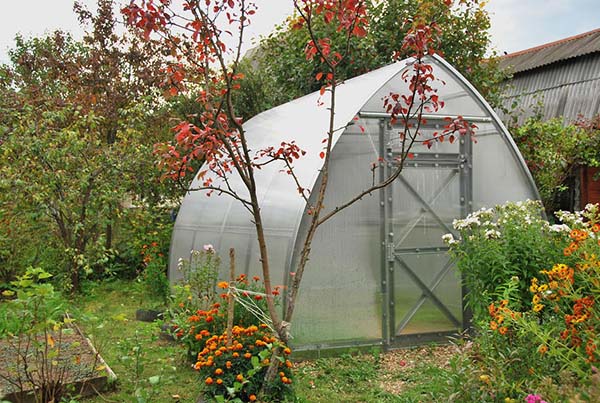
Content
- 1 Brief greenhouse processing scheme in autumn
- 2 Autumn greenhouse cleaning after harvest
- 3 Greenhouse treatment in autumn: washing and disinfection
- 4 Soil cultivation in the greenhouse: disinfection and preparation of the garden for the new season
- 5 Answers to popular questions about greenhouse processing
- 5.1 Can greenhouse walls be washed with phytosporin?
- 5.2 Is it possible to fumigate the greenhouse after sowing siderates?
- 5.3 Do I need to close the greenhouse for the winter or can I leave it open?
- 5.4 Do I need to throw snow into the greenhouse in winter?
- 5.5 Pre-planting greenhouse processing in spring
Brief greenhouse processing scheme in autumn
A step-by-step guide (diagram) for preparing a greenhouse in the fall for winter is as follows:
- Remove and dispose of all plant residues.
- Wash inside and outside (easy disinfection).
- Fumigate with a sulfur stick or treat with copper sulfate or Bordeaux liquid (if necessary, subject to severe infection or for prevention).
- Treat the soil - disinfect it (with the same copper sulfate or Bordeaux liquid, or (even better) biological products and improve its fertility (change the top fertile layer or sow siderates).
Further, each procedure and the need for it will be described in more detail.
Video: step by step preparation of the greenhouse for winter
Autumn greenhouse cleaning after harvest
When the entire crop of greenhouse vegetables is harvested, it's time to start preparing the greenhouse for winter and the new season.
First you need to remove all the tops from the plants (you must definitely pull them out along with the roots), as well as the mulch (since it can contain phytophthora spores).
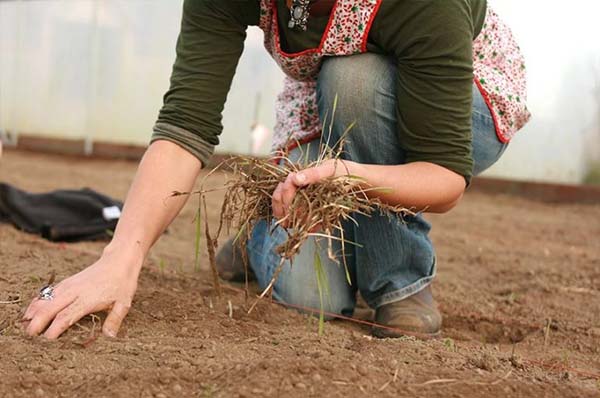
If the vegetables were tied on ropes to the arches (frame) of the greenhouse, then (ideally) you also need to completely get rid of them (although you can collect them in the fall, and in the spring process them in a pink solution of potassium permanganate, letting them lie down for 30 minutes and dry).
Important! It is better to burn all plant residues (tops, mulch) and other garbage, and not leave it on the site or bury it in the ground, all the more it should not be thrown into a compost heap.
If you notice damage to the metal frame (rust), then such a place must also be treated - cleaned with a brush, primed and painted.
Video: preparing the greenhouse for winter - autumn cleaning
Greenhouse treatment in autumn: washing and disinfection
When processing a greenhouse after harvesting, one cannot do without washing and disinfecting its walls, or rather disinfecting them, since various fungi and bacteria could settle on the walls of polycarbonate during the season.
Flushing the inner and outer walls
Such an event is extremely necessary, especially if there was an outbreak of any diseases in the greenhouse. In addition, the greenhouse must be kept clean at all times so that as much light as possible, which is necessary for the photosynthesis of plants, penetrates into it. But this is more relevant for spring processing and preparation of the greenhouse before planting, because during the winter it will still clog up. Another thing is if you will additionally sow siderates to improve the soil.
One of the most environmentally friendly and safe means for cleaning and washing a greenhouse is a baking soda solution (2 tablespoons per 10 liters of water). A solution of mustard powder is also suitable.
You can also prepare such a solution: 1 teaspoon of 70% acetic acid, 100 grams of liquid tar or laundry soap per 10 liters of water. A simple soapy solution will also work. Of course, at the end of the work, all the solution must be washed off with water.
Do not forget to wash the greenhouse outside, but this time with plain water, and you can do it manually or even with a hose.
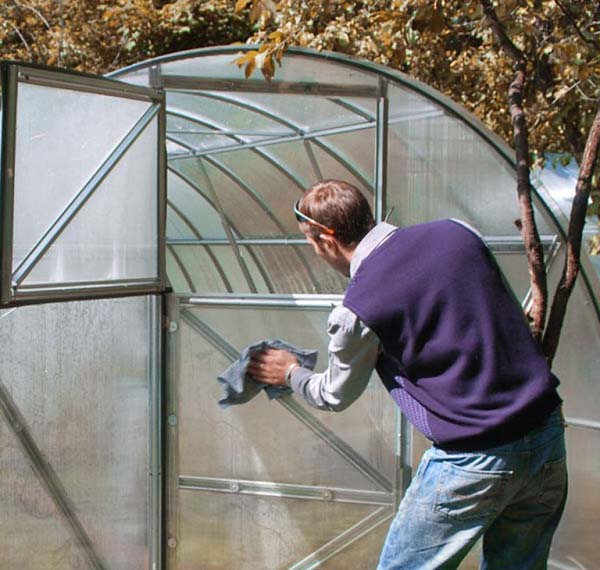
It is convenient to wash the walls with a sponge or a soft brush, and the ceiling with a mop, so as not to damage the polycarbonate, because it is a relatively fragile material.
Interesting! Some gardeners and truck farmers who like to bother, practice removing polycarbonate sheets for the winter. This is done so that the polycarbonate is not exposed to subzero temperatures, and the soil is moistened and saturated with melted snow.
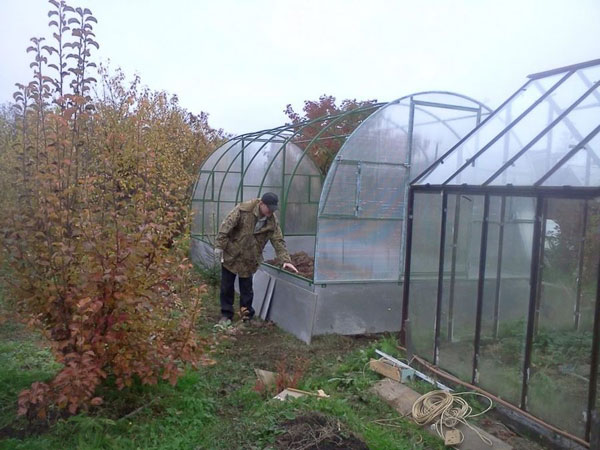
In principle, such a light disinfecting cleaning of the greenhouse will be quite enough. But if you need to carry out more powerful processing, then you should resort to fumigating with a sulfur stick or spraying with copper sulfate or other similar means.
Important! Autumn processing of the greenhouse with a sulfur stick and other strong means should be carried out only if there was a strong infection this year - the plants were affected by various diseases.
Video: flushing the greenhouse with water and soda
Fumigation with a sulfur checker
An excellent tool for processing a greenhouse after harvesting in the fall is fumigating it with a sulfur stick, the effect of which, according to most gardeners, is simply amazing. In addition to the fact that the greenhouse itself is disinfected (all cracks and walls), the soil is also disinfected (to a depth of 10 cm).
Note! Autumn processing of the greenhouse with a sulfur checker can be performed before planting. siderates, and even better to do it in early spring.
Before you fumigate the greenhouse with a sulfur stick, be sure to carefully read the attached instructions and strictly follow the safety rules.

By the way! In the article on greenhouse processing in spring detailed instructions for fumigating with a sulfur stick are given.
As a rule, shortly before using the sulfur checker, you should wash the walls of the greenhouse and dig up the ground so that the smoke can penetrate deeper into the soil. After use, wash the walls again, and first thoroughly ventilate the greenhouse.
Important! Sellers of polycarbonate greenhouses most often do not recommend using a sulfur block in them due to the fact that it can darken (cloud) the polycarbonate from the inside and, accordingly, reduce the illumination. However, most gardeners do not. Nevertheless, in any case, you should read the instructions for using the sulfur checker, since it is possible that if it is used in a greenhouse that is too small in area, then such a negative effect is quite likely.
An even greater danger of using sulfur sticks lies in the fact that the greenhouse can rust from them (metal corrosion will occur), provided that you do not have a galvanized metal frame (steel + primer + paint). However, you can additionally protect metal greenhouses by coating them with grease. If there is galvanizing, then there is no point in being afraid. Although, as a rule, it is recommended to process only wooden greenhouses with a sulfur stick.
Since many beneficial bacteria die as a result of the treatment with a sulfur checker along with diseases and pests, it is necessary to restore soil fertility, which can be done with the help of such a drug as, for example, "Baikal EM-1" or "Fitosporin", and best of all in early spring.
By the way! Exists tobacco checkers, they can be used in any metal greenhouse, but their use is limited, since they only help against insect pests, but not against phytophthora.

Treatment with copper sulfate or Bordeaux liquid and other strong means
As an alternative to fumigating with a sulfur stick, you can treat the greenhouse in autumn with copper sulfate or Bordeaux liquid. But it is worth considering that these funds also kill many beneficial bacteria in the ground.
To prepare a solution for spraying an infected greenhouse, you will need to dissolve 300 grams of copper sulfate in 10 liters of water (3%), although it is better to prepare even 1.5-2%. For prevention, the concentration should be reduced by 3 times - up to 100 grams (1%).
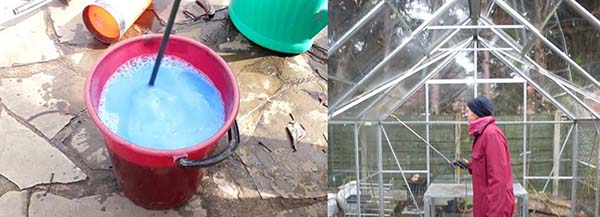
If you had to resort to using copper sulfate or Bordeaux liquid, then in the spring it is also advisable to spill the soil with beneficial bacteria (for example, all the same "Baikal EM-1" and "Fitosporin").
Soil cultivation in the greenhouse: disinfection and preparation of the garden for the new season
Among the measures required for tillage in the greenhouse in the fall, disinfection of the soil and preparation of the garden bed must be included.
Soil disinfection
Disinfection of the soil can be carried out using chemicals, for example, a solution of copper sulfate or Bordeaux liquid.
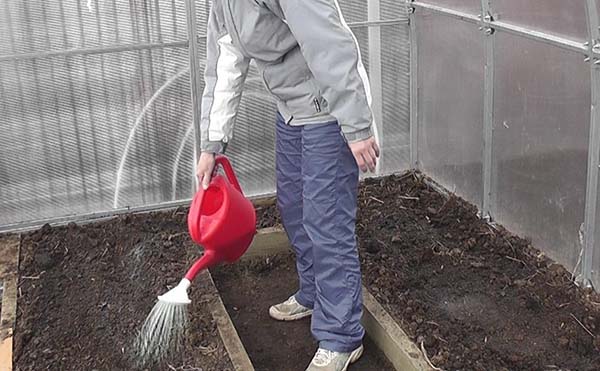
But it is much better to use special biological preparations, which also heal the soil. These include: "Fitosporin", "Baikal-EM", "Phytocid", "Baktofit", "Trichodermin" and the like.
Replacing the top fertile soil layer
If you want to be sure that there are no diseases left in the ground (although this method is not a 100% guarantee of the complete exclusion of all kinds of infections in the ground), then you can simply replace the upper fertile layer (within 10 cm). In principle, this should be done every 3-4 years. The proportions of the components introduced can vary depending on what you want to grow in the greenhouse, but, as a rule, peat, humus (or rotted compost), sand and wood ash.
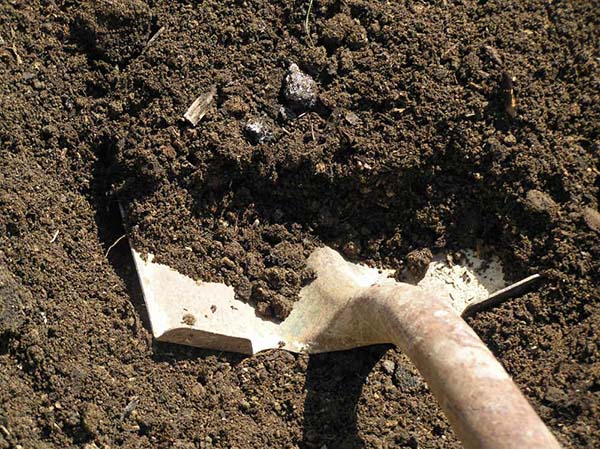
Advice! If you do not want to replace the fertile soil layer, and you need to plant the same crop in the same place next year, then you can plant siderates.
Sowing siderates
It is very useful to plant in the fall siderates in the greenhouse, for example, white mustard.
Interesting! White mustard always has yellow flowers. And the specific epithet "white" comes from the color of the seeds.
This green manure not only perfectly fertilizes the soil, improving its structure and fertility (due to its long tap roots, it loosens the soil to a sufficient depth and is an excellent source of phosphorus fertilizer), but also disinfects the soil, suppressing almost all fungal diseases.
Addition! Also, to improve and disinfect the soil in greenhouses in the fall, you can plant viku... This green manure is even more suitable for soil disinfection, and will also fertilize the soil with nitrogen.
Moreover, you can plant these siderates both together (in a mixture) or separately. Of course, the first option is preferable, but you can test it.
if you have problems with increased acidity of the soil, then you can additionally sow phacelia (excellent deoxidizer).
Sowing is very simple - you just need to spread the seeds evenly by hand over the garden bed (somewhere around 50-100 grams per 1 square meter), or sow into the grooves, and then close them up with a rake or a flat cutter. Then pour, but it is advisable to do this not just with water, but with a disinfecting solution Fitosporin... During the week, the garden bed should be watered every day, or covered with spunbond to keep the ground moist.

It is worth considering! Solution Fitosporin will be effective only at temperatures above +10 degrees.
On the last summer day, be sure to check how your siderates are there. If they only grow a little, then in the winter they can be left as they are. And if they stretch too much, then they should be cut at ground level with a flat cutter, and without embedding them in the soil, left in the garden (they will perepryat during the winter), although some gardeners, on the contrary, prefer to embed them in the soil before winter.
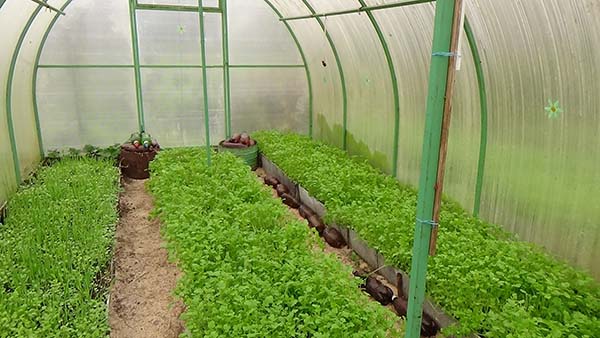
Answers to popular questions about greenhouse processing
Below are answers to the most common questions that arise when processing a greenhouse in the fall.
Can greenhouse walls be washed with phytosporin?
The idea is completely meaningless, since the essence of the use of this drug is that living organisms must multiply in the soil, thereby displacing pathogenic fungi, and not just die on the walls of polycarbonate.
By the way! The site has a detailed article on the areas of applicationphytosporin.
Is it possible to fumigate the greenhouse after sowing siderates?
No, in no case it is impossible - all green manure and all living creatures, of course, will die, including beneficial bacteria.
Do I need to close the greenhouse for the winter or can I leave it open?
If there are strong winds in your region in winter and / or you are not in the country during this period, then, as a rule, the greenhouse is closed for the winter (so that it is not demolished due to a strong gust of wind, because an open greenhouse is like an open parachute), although under certain circumstances you can leave it open (for example, if it is closed on three sides by outbuildings).
By the way, if you notice that all the walls and ceiling are wet, you shouldn't panic. This is just condensation - a normal phenomenon with closed doors and vents, this will not lead to greening or something else. Although, if this condensate then freezes, then there will definitely not be anything good for any structure.

Note! However, if the greenhouse manufacturer recommends keeping it open so that there is no temperature drop (due to thaws) - condensation, although you have strong winds, then it is better to keep the window open (if it is tightly pulled by a chain).

Do I need to throw snow into the greenhouse in winter?
It depends on what period. In fact, without snow, the ground freezes better. In addition, if you throw snow, it makes it easier for insect pests to winter. But for the soil, of course, melt water will be beneficial. Therefore, already at the end of winter (in February) or even in early spring (in March), you can throw snow inside the greenhouse.

Pre-planting greenhouse processing in spring
Note! The site already has a detailed an article about the cultivation of the greenhouse in spring and its preparation (including the soil) for the new planting season.
To save your energy and time in the spring, you need to worry about the rational processing of the greenhouse in the fall. Undoubtedly, such advance preparation will do the trick and help grow a real crop without problems.
Video: how to prepare a greenhouse for winter

